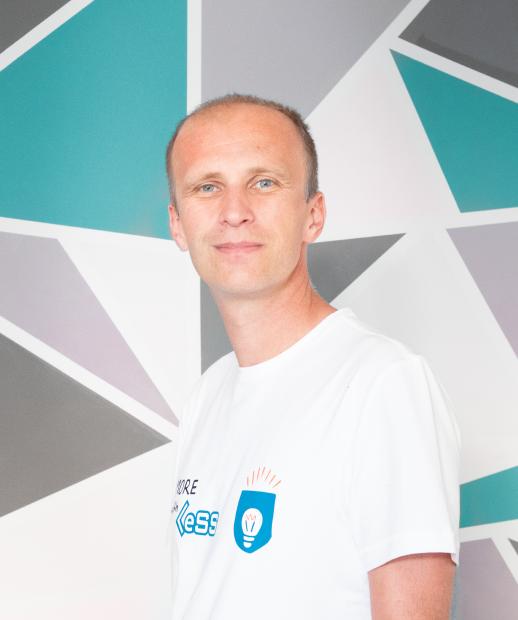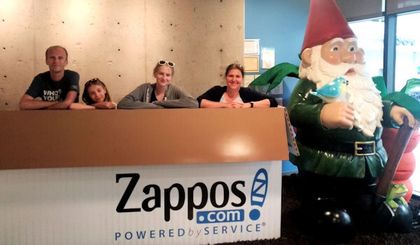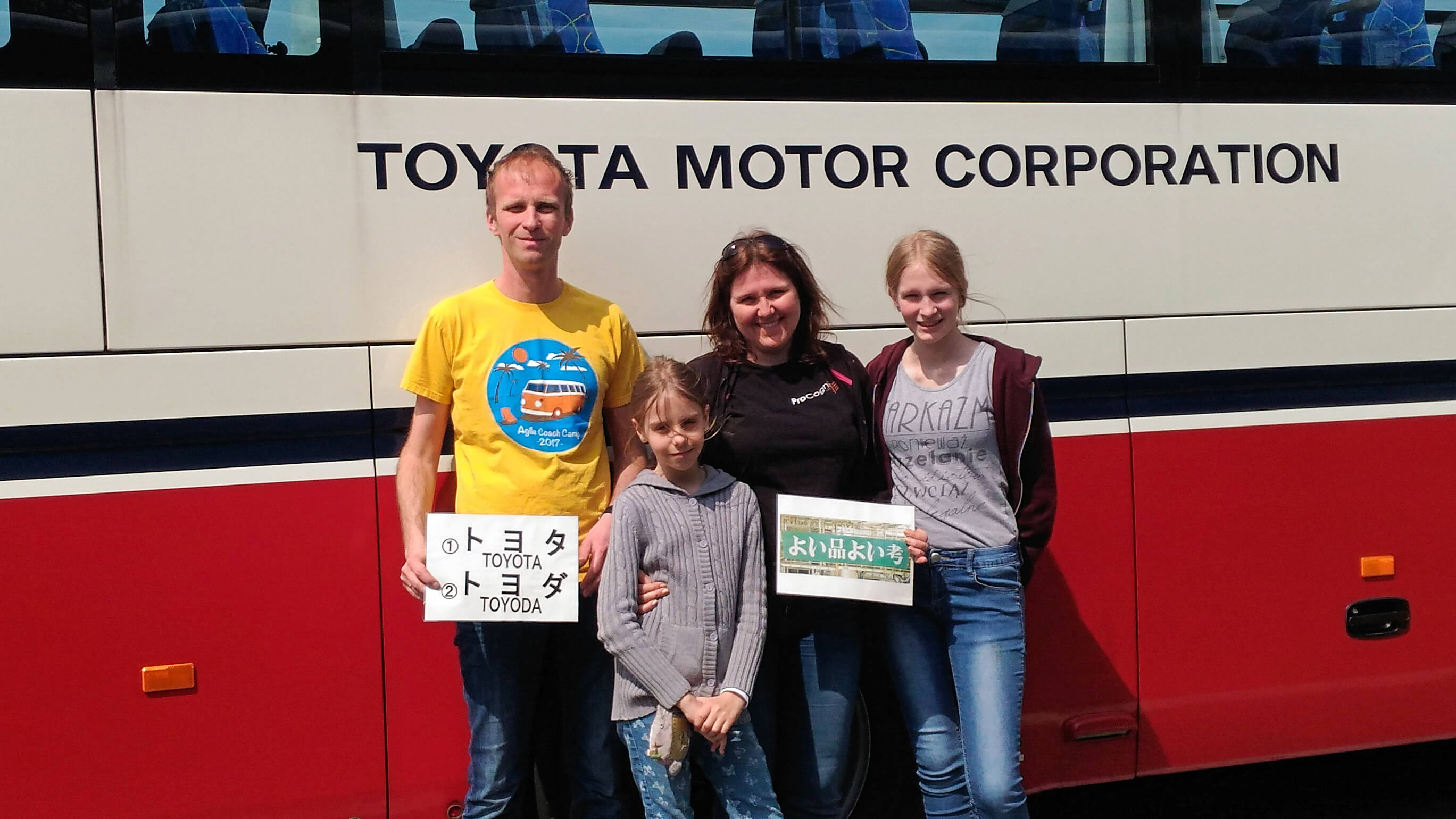The culture of delivering WOW experience in Zappos
During our trips we always try to visit companies known for their unique culture and way of working. You might have read the stories from Toyota and Mazda factories from our stay in Japan. This time, we had a chance to spent almost two hours in Zappos headquarters in Las Vegas, NV. As there was no one else in our group except us, we could get answers to all our questions.
Customer Service, where good is not enough
Zappos came to life in 1999, when it’s founder, Nick Swinmurn, failed to find shoes he was looking for at his local mall. From the very beginning company focused on delighting customers. Of course, every company will tell you that customers are important, but when it comes to money, the revenue wins. In Zappos delivering WOW through service is the first core value. The company was always offering free delivery and returns. Customer Support (called Zappos Customer Loyalty Team) seems to be the most important department in Zappos, and employees can do anything they think they should to "reduce customer anxiety" as our host called it. In practice, it means that you won’t find many things other companies believe are critical for running helpdesk. There are no scripts to follow, no expectation to upsell product, no talk time limit or target on how many calls an employee must do per day. The only metrics that matter? How fast the customer call is answered and how fast the problem is being solved. Therefore, every employee is empowered to do anything that should be done to delight the customer. Someone ordered a pair of shoes for his vacation starting tomorrow, but received the wrong ones? Send overnight, and make sure they’ll be delivered by 9 am. No managerial approval needed. We’ve helped building self-organizing Customer Support teams in inFakt and Codewise, but never seen this level of empowerment before.
"We want our customer to call us" said Jean, our host. Therefore the free number is clearly visible at zappos.com website and you can call them whenever you like and about whatever you like. They want to build long-lasting relationship, so if you happen to have similar hobby, feel free to talk about them. Even if it will be an hour, two, three, or ten hours fifteen minutes, as the current record is. Our second host spent over five hours talking about fantasy authors and sci-fi books.
Every new employee joins the helpdesk for a week to better understand company clients. And, during holiday season - all hands on deck - everyone join the Loyalty Team. That include HR, finances and even the company CEO, Tony Hsieh. I really wish more companies implement that approach, so every developer or manager could hear their customers.
Hiring for cultural fit
Every large company has a list of core values somewhere on their website and office walls, but only a few lives them every day. Zappos seems to be one of these rare exceptions. People are talking about 10 Core Values on daily basis. When hiring, they say they’re doing a "culture screening". And that applies not just to full-time employees, but everyone including seasonal workers, security, cleaners or a company serving the cafeteria. They’d rather spend twice as much time looking for the right person than select the wrong one. And the search for “cultural fit” does not limit to formal recruitment conversations. When they’d fly you in for interviews, they’d observe how do you interact with driver, who’d come to pick you up from the hotel, or with other people during the lunch.
If you pass the screening and are offered the job, you will spend next four weeks learning about the organization and its culture. At the end of this period, together with your colleagues you’ll prepare a presentation. However, it won’t be about your new job, nor about how great Zappos is. You’re expected to get on stage and present one of Core Values.
After your training, Zappos one more time will check if you really want to work there. You’ll be offered a monthly compensation in case you’d decide to leave the company. This is to ensure only people who buy into Zappos way of working stays.
Happy Employee = Happy Customer
After successfully passing recruitment process, Zappos will give you all you need, plus bit more. This includes free gym and fitness classes, mini-golf, basketball court, and ping-pong tables. You can choose from variety of free (or reduced-price) food. A side note: I really liked the idea of giving healthy food for free and making junk food paid. You’re also provided with health insurance, paid vacation, maternity leave or opportunity to use the life coach. Sure, we’ve seen these (and even more) in hi-tech companies we worked with, so the long list of benefits didn’t shock us. However, what was impressing, was that these things are not provided to highly-paid IT specialists, but to call-center workers. People who in many other companies are treated as low-cost employees with high turnover, who will be gone in less than 6 months.
And Zappos does not stop there. It gives the opportunity to learn through training or shadowing other people at their work, just like our second host did during our visit. Six times a year, Zappos shut down the whole company for a party or a town hall. Yes, no one is answering the call during that time, but Zappos says, having everyone treated fairly and equally is critical. All this is done to make sure that happy employees stay with the company and ensures customers get a great experience.
The largest experiment with Holacracy
If you’re interested in Frederic Laloux’s concept of Teal Organizations, then you’ve probably heard about Zappos’ CEO decision to move the whole organization to Holacracy in 2014. It is the largest company which chose the organizational structure without any formal managers. Of course, we took the opportunity to ask about the details. Our host was working in Zappos at that time, so we could hear the story first hand. As a supervisor she was directly impacted, losing her role. This was a difficult time for the organization as some people thought that no bosses mean no responsibility. I’ve mentioned before that the key metric for Zappos is response time. The goal is to have over 80% of incoming calls answered under 20 seconds. When organization moved to Holacracy, there were so many situations when people didn’t show up to work, that the metric went down to 30%! So Zappos struggled and many managers left the company - some sources talk about 20% of the whole senior staff. Of course, Zappos respected their decision and provided them with decent compensation. Among them was our host, having challenges with defining her role in a new structure. Some time later she picked a job in a credit card company. She was shocked by the cultural difference as everything was controlled by management (“except maybe how much water was flushed in the toilet by employees” as she told us). After nine months, she decided that she can’t stand it any longer and that working in Zappos’ call center is more rewarding than a supervisor position in traditionally managed company. She quit her job and joined Zappos again some time later as a seasonal hire and stayed with the company since then.
Over five years some part of Holacracy proved themselves to be working really well for Zappos. There are almost no private offices, except for legal and life coach. Even the CEO doesn’t have one and is sitting in small room on the ground floor, so you can see him from company inner court. Some things had to be adapted and more explicit, such as customer support workers' schedule and responsibilities. When we asked what she’d do differently with her current knowledge, she said she’d invest more time in training and mentoring everyone about the change and the reasons behind it. Something we’re always telling every customer who decides to adopt new way of working.
Where to learn more
If you want to learn more about Zappos culture then I’d recommend starting with reading Delivering Happiness book by Tony Hsieh, Zappos CEO. You can also sign up for a tour during your next stay in Las Vegas.




